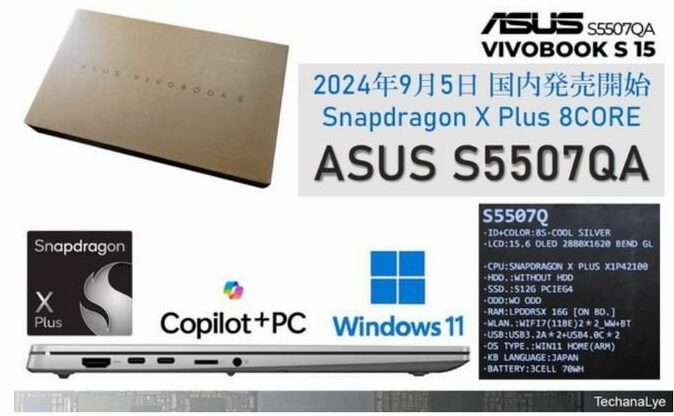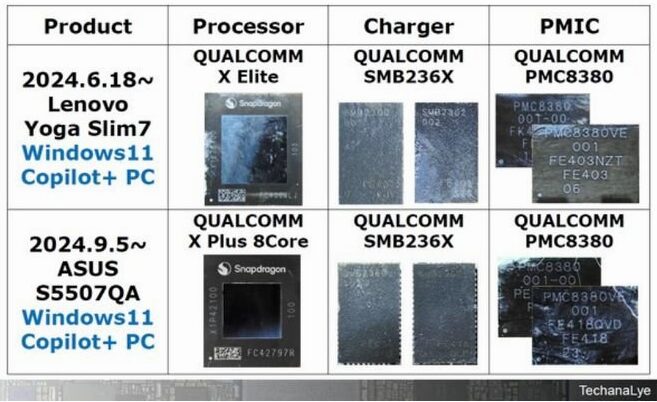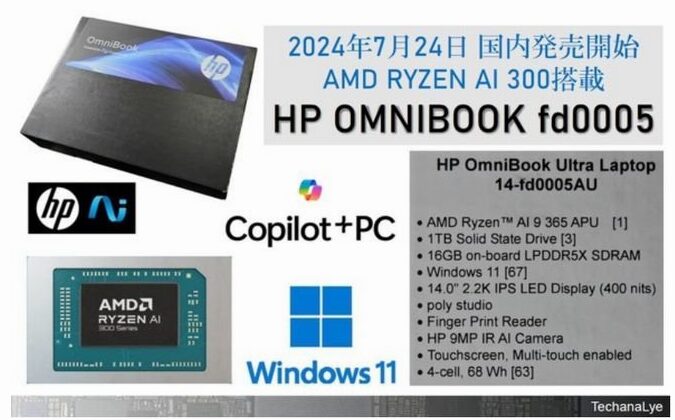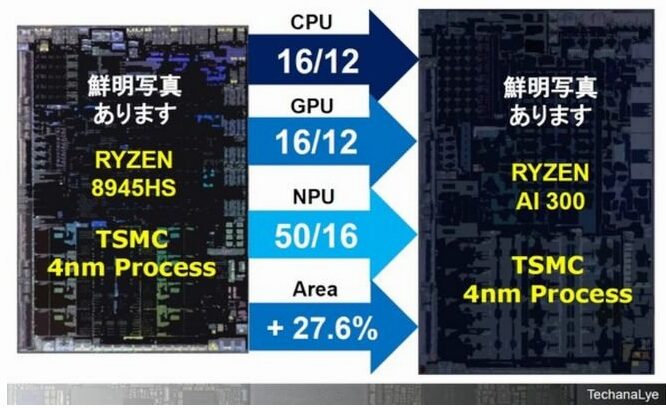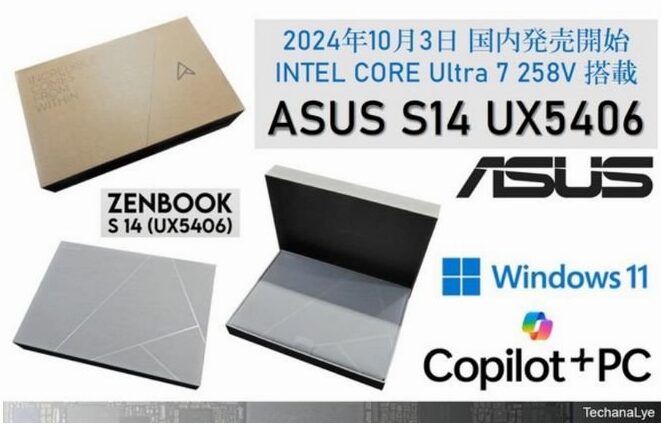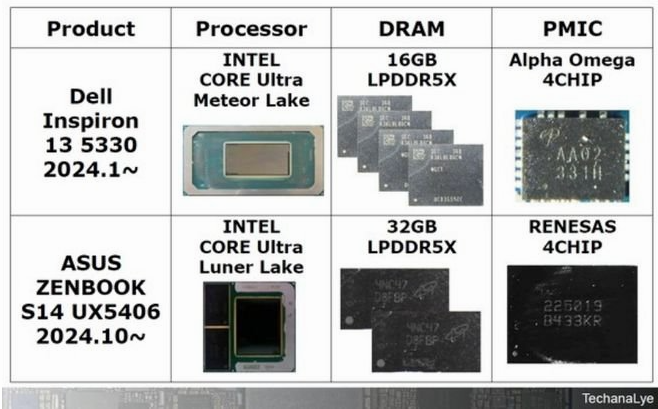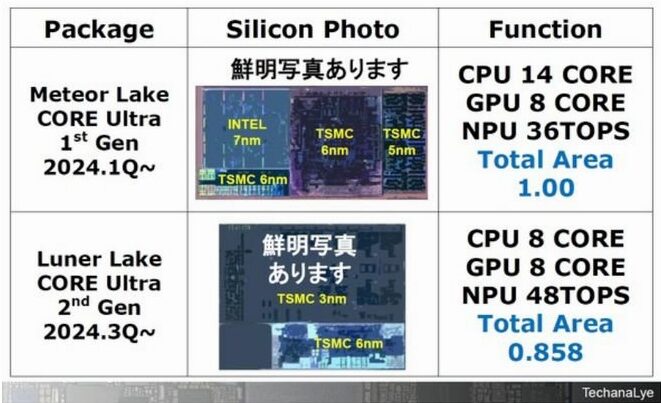Skip to content

The functionality of artificial intelligence (AI) has become crucial in various mobile devices. Particularly in 2024, AI PCs are being launched, marking it as the “Edge Device AI Era.” This article reviews the main AI PCs and processors released in the second half of 2024.
The semiconductor industry in 2024 is expected to be fully led by AI technology. Chips with AI processing capabilities, high-capacity dynamic random-access memory (including high-bandwidth memory and low-power double data rate 5X type), and power integrated circuits capable of executing segmented power management are being integrated into mobile devices on an unprecedented scale.
With the rapid development of generative AI technology, AI functionality has become standard in devices such as personal computers, smartphones, augmented reality/virtual reality devices, drones, and in-vehicle systems. Some AI systems are combined with cameras and sensors, while others operate in the background to optimize wireless communication environments.
Given the multitude of processors and products set to launch, 2024 can undoubtedly be considered the “AI Application Era for Edge Devices.” This article will particularly focus on personal computers and processors equipped with AI technology launching in the second half of 2024.
Three Major Changes Brought by Mobile AI
Mobile AI devices are leading three significant transformations.
First, processors integrate a dedicated hardware computing unit called NPU (Neural Processing Unit), responsible for executing specific integer operations, floating-point operations, and multiply-accumulate operations, resulting in a corresponding increase in chip area.
Second, the installation height of parallel high-capacity DRAM matching the computing units has been increased, with major companies adding DRAM capacity in their 2023 models. For instance, the “Google Pixel 8” is equipped with 12GB of DRAM (similar examples include the 2024 “Google Pixel 9,” which has a capacity of 16GB).
Third, processors are paired with numerous power ICs to achieve precise power control. As the number of NPU cores in processors increases and DRAM capacity expands, power ICs are also segmented and increased accordingly. Mobile AI devices are gradually enhancing semiconductor usage. In the PC sector, models compatible with “Copilot+ PC” (NPU 40TOPS or above) will be launched as AI PCs starting June 2024.
ASUS AI PC Equipped with Qualcomm Snapdragon X
Figure 1 shows the “Vivobook S 15 S5507QA” launched in September 2024, which is compatible with ASUS Copilot+ PC. The processor it is equipped with is the Qualcomm “Snapdragon X Plus 8-CORE,” which serves as a more economical alternative to the “Snapdragon X Elite,” with a compromise in performance.
The device is equipped with 16GB of DRAM. Given that the market price for high-end laptops typically exceeds 200,000 yen, this product is priced around 100,000 yen, although it supports Copilot+ PC, its CPU and GPU performance is somewhat reduced.
Figure 1: ASUS “Vivobook S 15 S5507QA” Released in September 2024
Table 1 reveals the configuration of the Qualcomm Snapdragon X Elite (top row) launched in June 2024 and the Snapdragon X Plus 8-CORE (bottom row) launched in September regarding the power system and processor. Qualcomm not only provides chipsets for the power and communication systems of smartphones but also offers a variety of battery charging, battery management, and power IC products tailored for the personal computer market.
Among these products, a total of 8 power ICs and 4 battery ICs are equipped. Whether it is the high-end Snapdragon X Elite or the more affordable X Plus 8-CORE, both utilize the same power ICs and battery ICs. This standardized power supply system is also widely applied in the smartphone sector.
Table 1: Qualcomm “Snapdragon X” Series Internal Configuration
Figure 2 shows the Qualcomm Snapdragon X Elite (left) and Snapdragon X Plus 8-CORE (right) chips produced using TSMC’s 4nm process technology. The left X Elite, as a high-end model, features a 12-core ORYON CPU and a 12-core Qualcomm self-developed GPU Adreno, with a maximum operating frequency of 4.3GHz.
Figure 2: Snapdragon X Series Chips
The right X Plus 8-CORE’s economical CPU configuration consists of eight cores, reducing four cores compared to the standard version, while the GPU consists of seven cores, reducing five cores. By streamlining functionality, the chip’s silicon area is reduced by approximately 28%, and the maximum operating frequency is adjusted to 4.0GHz.
To meet the performance requirements of Copilot+ PC, the economical version’s neural network processing unit (NPU) maintains the same performance as the high-end version, which is 45TOPS. By reducing the silicon area by about 30%, not only is the data yield from the wafer improved, but also multiple test patterns can be reused, significantly lowering production costs and ensuring compatibility with AI PC processors priced in the 100,000 yen range.
Figure 3 shows the HP OmniBook Ultra 14-fd0005AU launched in July 2024, which is a device compatible with Copilot+ PC. It is equipped with AMD’s APU (Accelerated Processing Unit, a combination of CPU and GPU) – the “Ryzen AI 300” series designed specifically for Copilot+ PC compatibility.
Compared to the 2023 “Ryzen 8000” series APU, which has integrated AI functionality but does not meet the performance requirements of Copilot+ PC with its 16TOPS performance, the Ryzen AI 300 series processors are equipped with up to 50TOPS performance, with NPU performance more than tripled compared to the previous generation, starting to be integrated into AI personal computers from July 2024.
Figure 3: “HP OmniBook Ultra 14-fd0005AU”
Table 2 presents a comparative analysis of the “Ryzen 9 8945HS” processor from the AMD Ryzen APU 8000 series and the “Ryzen AI 9 365” processor from the Ryzen AI 300 series. It should be noted that AMD does not provide chipset support, and both processors are equipped with MPS (Monolithic Power Systems) power system integrated circuits.
Table 2: Comparison of “Ryzen 9 8945HS” and “Ryzen AI 9 365”
Figure 4 compares the Ryzen 9 8945HS and Ryzen AI 300 chips. Both chips include CPU, GPU, and NPU and are manufactured using TSMC’s 4nm process technology. Both chips’ CPU and GPU architectures have been upgraded to the latest, where the CPU architecture has been upgraded from Zen 4 to Zen 5, and the GPU architecture has been upgraded from RDNA3 to RDNA3.5, with the number of cores increased from 12 to 16.
In terms of CPU configuration, a 4-core Zen 5 architecture and an 8-core Zen 5C (compact) architecture have been adopted, with performance streamlined. Due to the adoption of the same TSMC 4nm process technology, the chip’s functionality has been enhanced, resulting in approximately a 28% increase in silicon area.
It is certain that the next generation of products after 2025 will adopt 3nm process technology, making the 4nm process likely the last use, and its size has expanded.
Figure 4: Comparison Between Ryzen 9 8945HS and Ryzen AI 300 Chips
ASUS AI PC with Intel Ultra
Figure 5 shows the “Zenbook S 14” (model UX5406) from ASUS’s Copilot+ PC series launched in October 2024. This device is equipped with Intel’s 200V Lunar Lake processor, which is the second generation of the “CORE Ultra” series. In contrast, the Meteor Lake launched in January 2024, as the first product of the CORE Ultra series, had an NPU performance of 36TOPS but did not meet the performance requirements of Copilot+ PC. The second generation Lunar Lake processor’s NPU performance has been further enhanced to 48TOPS, compatible with the performance requirements of Copilot+ PC.
Figure 5: ASUS Copilot+ PC “Zenbook S 14” (UX5406)
Table 3 reveals the chip configuration of personal computers equipped with the first generation Meteor Lake (top row) and the second generation Lunar Lake (bottom row). Lunar Lake minimizes chip area and shortens signal transmission distance by integrating DRAM within the package.
This technology has been adopted since Apple launched the “M1” chip in 2020, and Apple has actually been using this technology since the “A12X” chip in 2018. As for Meteor Lake, its combination power IC is provided by Alpha & Omega in the United States, while the combination power IC for Lunar Lake is provided by Japan’s Renesas Electronics, totaling four chips.
Table 3: PC Chip Configuration with Meteor Lake and Lunar Lake
Table 4 presents the silicon structure of the first generation Meteor Lake and the second generation Lunar Lake in the CORE Ultra series. Both consist of multiple small chips. Meteor Lake is composed of five different organic silicon materials, including a silicon interposer that connects each chip and provides power.
In contrast, Lunar Lake consists of four organic silicon materials. The CPU of Meteor Lake is manufactured using Intel’s 7nm process (code-named INTEL 4), while its GPU and NPU are outsourced to TSMC. In Lunar Lake, the CPU, GPU, and NPU are all manufactured using TSMC’s 3nm process.
Almost simultaneously, Intel also began to launch Arrow Lake processors for desktops, which also use TSMC’s 3nm process and feature a small chip architecture. It is expected that in the second half of 2024, Copilot+ processors compatible with PCs will be launched, but it is worth noting that there are differences among companies in the power ICs used for manufacturing chips.
Table 4: Silicon Status of Meteor Lake and Lunar Lake
By 2025, the alliance between MediaTek and NVIDIA is expected to further expand into the Copilot+ PC market. At the same time, Qualcomm, AMD, and Intel also intend to launch their next-generation processor products. We will continue to monitor the smartphone market and provide relevant observations and reports.
(Original article published in EE Times Japan, translated by Franklin Zhao.)
Author: Hiroshi Shimizu (テカナリエ), EE Times Japan

